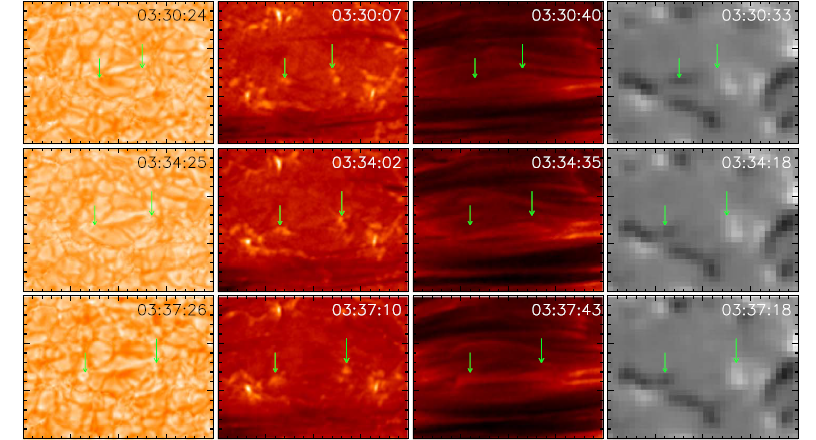A research team led by SHEN Jinhua, associate professor from the Xinjiang Astronomical Observatory (XAO) of the Chinese Academy of Sciences, has investigated the eruption of small-scale solar activities accompanied by energy transport in the lower atmosphere.
The study was published in The Astrophysical Journal. It was based on high-resolution observations from the Fuxian Lake One-Meter New Vacuum Telescope (NVST), combined with multi-band imaging and magnetic field observations from the Solar Dynamic Observation (SDO).
"The surface of the Sun or the bottom of photosphere shows granular structure resembling the interior of a pomegranate, which is generated by the impact of solar convection on the photosphere," said SHEN.
The study of the dynamic process of super-large granule revealed not only the physical mechanism of the small-scale activities in the lower atmosphere, but also the process of energy transmission by which magnetic energy is released.
The researchers found that the eruptive surge could be triggered by the re-connection between the emerging magnetic flux and the preexisting ambient field, leading to localized heating and bidirectional flows. "For the abnormal granular emergence of serpentine-field in this active region, its emergence was accompanied by the separation movement of magnetic bright spots and the formation of a new group arch filament system," said SHEN.
For the first time, the researchers revealed that the emergence of abnormal granule is caused by the separating motion of magnetic dipole field emerging from beneath the photosphere.
In addition, they inferred that the bright points were due to the strong-field magnetic concentration in the dark inter-granular lanes rather than the instantaneous Ellerman bombs.

Fig 1. Panels (a–b): NVST/Hα image and a magnetogram taken by HMI, showing the arch filament system and the LOS magnetic field. Panels (c–d): Images of the line wing of NVST/Hα and TiO band.

Fig2. Evolution of the subregion ROI 1 at multiwavelengths from 03:41 to 04:22 UT. Displayed from left to right are the TiO-band images, the wing of Hα +0.8A, the Hα line center filtergrams, and the AIA 1600 ? images
Contact: SHEN Jinhua
Xinjiang Astronomical Observatory, Chinese Academy of Sciences
Email:shenjh@xao.ac.cn
Web:https://doi.org/10.3847/1538-4357/ac37c3